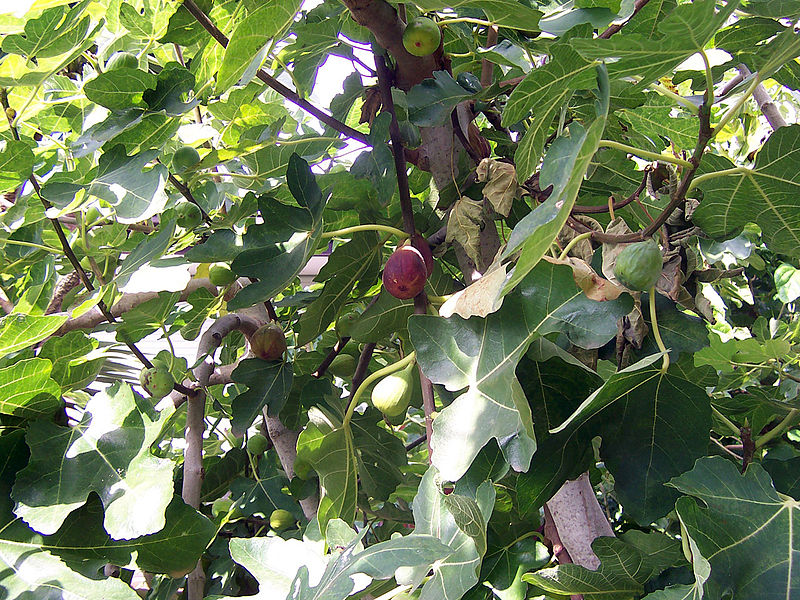
Summer 2019
Truth never ends. It is eternal. We are in a new era of time when new heroes are rising up while evildoers are being further exposed. A true hero exposes how the oligarchy uses policies that harm non-immigrants and immigrants alike without aligning with xenophobic groups. A real hero loves the African Diaspora and realizes that Pan-Africanism is alive and well. A real hero will never scapegoat women and believes in economic justice. The precept of justice is what I believe in. It isn't enough to speak of freedom. We have to be in grassroots campaigns that advocate for community development, an end to police brutality, the expansion of healthcare, the investment in true education, improving our environment, and advocating living wages. We desire a foreign policy that is adamantly opposed to imperialism and authoritarian regimes. That foreign policy position stipulates additionally that brutal occupation against any group of people has no place in the Earth. Even some who claim to be woke refuse to condemn the people overseas experiencing genocide and Western neo-colonialism. An injustice anywhere is a threat to justice everywhere as the late Dr. Martin Luther King Jr. has accurately stated. Therefore, we want freedom for people internationally.
We are in June 2019 now. June is African American Music Appreciation Month or Black Music History Month. For a long time, black people have shown music that reaches into our souls and dealt with many topics. Mahalia Jackson was the greatest gospel vocalist ever with her songs on spirituality. Aretha Franklin made records that wanted respect and true love. Stevie Wonder's songwriting and music are universally respected by people globally. Rakim has shown excellent lyricism for decades. Also, music is diverse. Black people are found in hip hop, R&B, country, jazz, rock, funk, blues, disco, house, techno, reggae, rumba, samba, etc. That is why investments in music and the arts are very important. Music can inspire us to do things, and it can expand our creativity. Studies have always presented research on the beneficial characteristics of music on human beings. Also, it is important to reiterate that music is not limited based upon age or generation. There are tons of human beings who are young and old that are displaying magnificent music. Therefore, the greatness of us is that we are multifaceted in our Blackness. We can perform music, be involved in STEM fields, write, study, and help our communities at the same time. Black music is always a blessing.
Antonio Moore of the ADOS movement certainly went too far with his disrespect of Lupita Nyong'o. He said that African Americans typically have 20 % European DNA (which is true in many cases but not in every case). I don't have 20% European DNA at all. I have almost 90% sub Saharan African DNA. Then, he said that he doesn't want Lupita to be part of black films relating to the black American experience when she lived in America for years, interacted with black Americans, and loves black history. Not to mention that stories do exist of African Americans living with Africans in America. So, in every level, he is wrong. Moore is a total deceiver since he mixes truth (about the statistics of income inequality and the wealth gap involving black Americans) with lies (in that he believes that we, who are black Americans, shouldn't unite with all of the African Diaspora on the issue of reparations for black Americans. He wants us to concern ourselves with American issues or reparations for black Americans primarily when all in the African Diaspora deserve reparations. Pan-Africanism is superior to ADOS' cultural chauvinism). I will support black Americans, Africans, all people in the African Diaspora, and black immigrants dedicated to black liberation rather than deceptions. I certainly don't believe in Tanton's pro-eugenics views. Justice is my aim.
Anyone who is apart of an organization (like the PFIR, which is a front group and is aided by the white nationalist John Tanton. Yvette Carnell is one the board of PFIR. Tanton is involved in FAIR) funded by racist eugenicists isn't for black liberation. 2019 is a year where light is being shined on the truth greatly. We take inspiration from the heroes of the Pan-African struggle whose names are: Nazinga Yaa Asantewaa, Constance Cummings-John, Funmilayo Ransome-Kuti, Titiana Silla, Tchaiko Kwayana, Eusi Kwayana, Walter Rodney, Nkrumah, Du Bois, Clauida Jones, Malcolm X, Cabral, etc. For the record, the great fight for reparations existed long before the ADOS movement (which has some, not all people, spewing disturbing anti-African views). Not all ADOS followers hate Africa. I don't follow the ADOS movement period. Activists will continue to fight until black Americans have reparations. I will always believe in reparations. Likewise, reparations should not be used as an excuse to ignore our efforts as black people to use self determination in establishing our own independence. Freedom, justice, and independence go hand in hand.
It is important to promote encouragement among people. There are tons of stories about people where they overcame the odds to achieve great things. There is the myth that people are self made. That isn't true. Every human being on this Earth had help to get to where they have gotten to. There are always mentors, teachers, relatives, friends, and other people assisting humanity. Therefore, we aren't islands, and it is important to promote help to those who need it. That isn't shameful, and it shouldn't be disregarded. Also, we express empathy towards the victims of the destructive tornadoes in Missouri and other parts of the Midwest. Also, we can't be naive. The stock market is going very great. Many people are rich. Yet, many of the working class and the poor are still suffering, especially among some of the Millennial generation. The bailout of Wall Street and the massive transfer of wealth from the poor to the super wealthy have not solved all financial complications.
Millennials have more college debt than their parents' generation. National college debt is now at $1.3 trillion, and college tuition has increased by 1,140 percent since the late 1970's. By 2014, 48 percent of workers with bachelor’s degrees are employed in jobs for which they’re overqualified. Many Americans work two or three jobs just to pay rent, get food, or have health care. Most “young millennials” have less than $1,000 in their savings accounts. This is a serious problem. The solution isn't some centrism or some piecemeal stuff when we have an emergency. It is going to take billions of dollars and a radical redistribution of economic and political power. That is why the fight for justice is ongoing.


Geography
One of the greatest subjects to study is geography. The greatness of geography is that it is a field of science that studies the Earth’s topographical features, people, and its total components in general. It also involves the study of the Moon and other planets. Geography is complex too. There can be no study of geography without understanding the diversity found in the human race. Cultures and various traditions are diverse in scope. You have to love people to learn geography fully as geography deals with sociology plus the comprehension of world cultures. When you learn about the flow of rivers or streams that relates to geography. When you study geopolitics and various populations, these items involve geography. Therefore, geography is never monolithic. It is very widespread in scope. Physical geography is about the knowledge of plants, biosphere, flora, and fauna of the Earth. The concepts of meteorology, the environment, landscapes, and oceanography all encompass physical geography as well. Human geography is geared to research the lives of human beings. Culture, history, geopolitics, population geography, sociology, religion, tourism, transportation, urban geography, and other concepts all are a part of human geography. In real life, every class that I have took in college involving geography, I have enjoyed greatly. So, this subject is a very fun one to research. Maps, geographers, and other facets of life enrich us in many ways. That is why geography is important, because the more that we understand about the Earth, the better that we can improve it. With climate change and various issues in the world, we certainly need more collaboration in solving global or international problems. Geography is very important. From studying the seven continents of planet Earth to witnessing the applications of geography in everyday life, I truly love geography.

Physical Geography
One of the most important aspects of geography is to understand about the world around us. Physical geography encompasses many studies of weather, climate, and other parts of the Earth. When you see an image of the Earth with the green, blue, and other colors, it outlines plant life, mountains, forests, rivers, and oceans. All of these entities are interconnected with each other. Physical geography is a natural science that studies the processes and patterns in the natural environment. That is why it must involve research into the atmosphere, hydrosphere, biosphere, and geosphere. Physical geography is divided into many sub divisions too. Geomorphology studies the Earth’s surface. Hydrology is concerned with water on land surfaces including lakes, rivers, aquifers, and glaciers. The study of glaciers and ice sheets is called Glaciology. Biogeography is the study of geographic patterns in species distributions and the processes that result in the patterns. When weather TV anchors and scientists talk about meteorology in public, they individuals are dealing with the scientific study relating to physical geography too. The study of soils in the natural environment is called pedology. When people investigate fossils, plate tectonics, ancient supercontinents, and geologic time, all of these fields are related to paleogeography. Coastal geography deals with the research into the ocean and the interface of the ocean and the land as well. Learning about the Earth’s oceans and seas relates to oceanography. When researchers study the Quaternary period (or the last 2.6 million years), it is called the Quaternary science.
Many dedicated human beings use landscapes, geomatics (or gathering information relating to geography), and environmental geography in order for folks to have a better picture on how planet Earth operates. In geomatics, researchers use maps, globes, satellite images, photographs, diagrams, etc. in finding out facts. Some people use GIS or Geographic Information Systems, databases, and primary sources to find the nature of countries, cities, and environments. Areas are defined by scales too. Satellites and other devices are utilized to find the area of a place. Some maps are distorted in their images. The Mercator, Robinson, and Polar styles of maps help us see places in unique ways. Major land biomes include: tropical rain forest, tropical dry forest, tropical savanna, temperate grassland, desert, temperate woodland and shrub land, temperate forest, boreal forest (taiga), tundra, and mountain and ice caps. 7% of the Earth’s surface is made up of water.
Geography deals with finding places. The latitude and longitude define absolute location. Absolute location is the definite place of a structure, a person, or any entity. Relative location describes the spatial relationships between and among places. For example, the relative location of New York City is that it is nearly 100 miles from Philadelphia. Mental maps are indicators of how well people know of the spatial characteristics of certain places. Tons of maps have the equator, the prime meridian, and other areas. Some graphs outline the human characteristics of a place from languages, the types of housing, dress, recreation, customs, and traditions. That is why maps must have symbols, colors, lines, boundaries, and contours. More complex maps can outline population (i.e. distribution and density), economic activity, resource, language, ethnicity, climate, precipitation, vegetation, physical lands, and political views. Scientific journals are abundant to show the research about the information found in physical geography or ecology in general like the Polar Research, Soil Science, Geomorphology, etc. This field of study has been around since the days of Strabo and Eratosthenes (plus before their times). Currently in 2019, even more scholars are doing great work in discovering the mysteries of the Universe. The heat transport in the biosphere is unequal heating of Earth’s surface. This drives winds and ocean currents. Warm air at the equator rises and cool air at the poles sinks. Cold water at the poles sinks and rises in warming regions. Landmasses affect winds and ocean currents (physically interfere). Winds, currents, landmasses influence temperature and precipitation which in turn creates the Earth’s climate. The polar zone, the temperate zone, and the tropical zone are parts of the human climate.

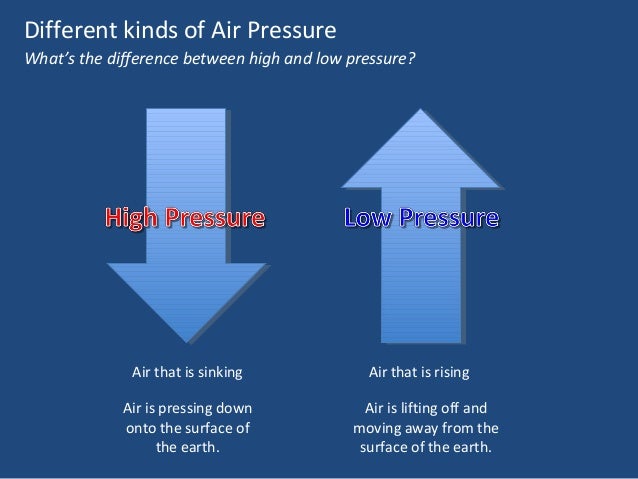
Climate and Weather
Anyone must understand climate to fully comprehend geography. With the existence of climate change, it is very vital for us to know about our climate. Climate is about the reality of weather conditions in a general area over a period of time. Climate has many characteristics. Climate patterns are formed by the interplay of common elements. Climate regions have specific vegetation and weather is diverse in many climate regions as well. Climate and weather phenomena do affect how people live in different regions. For example, a climate with a very cold climate will cause people to have certain societies in adjusting to that weather. Climate characteristics are temperature, precipitation, and seasons (with hot, cold, wed, and dry realities). The climatic elements are the influence of latitude, the influence of winds, the influence of elevation, the proximity to water, and the influence of ocean currents. That is why meteorologists all of the time talks about wind pressure, ocean currents, and low pressure when describing weather. In areas of low latitude, you can have tropical wet, dry, and semiarid highland. In middle latitude, there are semiarid, Mediterranean, humid continental, marine west coast, and highland. In high latitude, you have subarctic, tundra, and icecap. Vegetation regions in climates worldwide are very diverse. They include the following: rain forest, savanna, desert, steppe, middle latitude forests, taiga, and tundra. Corps, clothing, housing, and natural hazards deal with climate. In South and Southeast Asia, there are monsoons. Typhoons exist in the Pacific Ocean (which is a weather phenomenon). Hurricanes form in the Atlantic Ocean, and tornadoes are common in America.

Source: Physik, Uni - München
Regions can be both physical and cultural. Physical regions are places like the Sahara, Taiga, the rain forest, the Great Planes, and the Low Countries. Cultural regions can deal with language, ethnic groups, religions, economic groups (like the EU), and political organizations (i.e. NATO, the African Union, etc.).
Biomes are the major ecological associations that occupy broad geographic regions of land or water. Biotic and abiotic factors influence the nature of many Earth biomes. Climate differently can determine terrestrial biomes in areas along with the factors of temperature, rainfall, and solar radiations. Examples of terrestrial biomes include the tundra, southeast evergreen forest, Eastern deciduous forest, grasslands, taiga, etc. Terrestrial biomes have vertical stratification. That means that it includes the canopy, low-tree, shrub understory, ground layer, forest floor. Each section has certain animals and different fauna and flora.

The Biosphere
The biosphere is the multiple regions of the Earth from the Earth’s surface (which is found in the bottom of the ocean’s floor) into space. It encompasses the trees, the ocean trenches, and the mountaintops plus the high reaches of the atmosphere. The biosphere is made up of all parts of the Earth where life exists. It is part of all ecosystems. Scientists and researchers divide the biosphere into many different sections. The solid surface layer of the Earth is called the lithosphere. The atmosphere is the layer of air that stretches above the lithosphere. The Earth’s water on the surface, in the ground, and in the air is part of the hydrosphere. Life exists on the ground, in the air, and in the water. Therefore, the biosphere is made up of all of these different types of spheres. The biosphere is about 12 miles from top to bottom. Almost all life existed in about 1,640 feet below the ocean’s surface and to above 3.75 miles above sea level. In the biosphere, the food web helps to release nutrients in the world. Some remains of dead plants and animals release nutrients in the soil and ocean. Growing plants re-absorbed those nutrients. Many ecosystems make up the biosphere. As people travel higher in the atmosphere, oxygen levels go down. Carbon dioxide levels grow when people clear forests or burning fossil fuels. The greenhouse effect is when materials in the atmosphere like CO2 and water vapor retain heat. This raises atmospheric temperature (This is a reality that has grown by human intervention which has decreased the ice caps too). More CO2 is in the atmosphere as a product of the greenhouse effect. The hydrosphere is threatened by oil spills and industrial wastes too. That is why we have to be careful in dealing with the biosphere. The atmosphere is the gaseous component of the biosphere. Atmospheric oxygen is produced by photosynthesis.
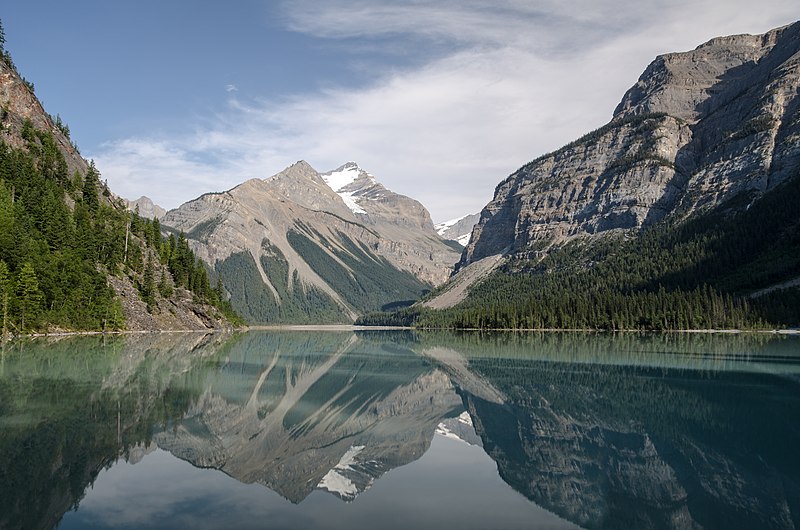
Geology
Involving continental drift, the single great landmass on Earth was called Pangaea. It broke up about 200 million years ago. There were two supercontinents that resulted from this break up. There were Laurasia (i.e. North America, Eurasia, and Greenland) and Gondwana (i.e. South America, Africa, Madagascar, the Arabian Peninsula, India, Australia, New Guinea, and Antarctica). Continental drift explains many puzzling distributions of animals. There are similarities between some organisms in South America and Africa. Wallace’s line represents a geographic separation between Asian and Australian faunas. A collision of tectonic plates brought formerly distant land masses closer together.


Flora and Fauna
The temperate deciduous forest receive ran year round. The winters are cold with hot, humid summers. Animals in that region may migrate, hibernate, or survive on scarce available food (or stored through the winters). The coniferous forest or taiga is common in the Northern Hemisphere. The evergreens are dominant there. It has colder, less rain than the temperate forests. Mammals that inhabit the coniferous forests include deer, moose, elk, snowshoe hares, wolves, foxes, lynxes, weasels, and bears. These animals are adapted for long, snowy winters. The tropical rain forests have a lot of rain and are general warm year round. The canopy part of the tropical forest has insectivorous birds and bats. They fly above the canopy. Fruit bats, canopy birds, and mammals live in the canopy eating leaves and fruits. The middle zones are home to arboreal mammals (like monkeys and sloths), bats, insects, birds, and amphibians. Many of these animals move along the tree trunks feeding at all levels. Ground level has larger mammals (like capybara, paca, agouti, pigs, etc.) including a very of reptiles plus amphibians. Nutrients in a tropical forest are tired up in living organisms, so the soil is poor. Many folks use slash and burn agriculture. Vegetation is removed to grow cops. Yet, the soil is so poor that fields must be moved often. Temperate grasslands receive seasonal precipitation and have cold winters plus hot summers. Prairie is another term for grassland.
Grasses and herds of large grazing mammals are dominant in grasslands. Jackrabbits, prairie dogs, and ground squirrels exist too. There are predators like coyotes, cougars, bobcats, raptors, badgers, and ferrets. Savannas are tropical grasslands with seasonal rainfall. The chaparral receives highly seasonable rainfall. Shrubs and small trees are common in the chaparral. They have adaptations to fire. The tundra has a permanently frozen layer of soil called permafrost that prevents water infiltration. It is very cold, it has a short season and it has little rain. The tundra is readily covered with bogs, marshes, or pounds. Grasses, sedges, and lichens may be common too. Animals in the tundra include lemmings, caribou, musk-oxen, arctic foxes, arctic hares, ptarmigans, and other migratory birds. Deserts have very low precipitation in less than 30 cm. per year. There have variable temperatures. Animals are often nocturnal and live in burrows. Reptiles and small mammals are common in deserts.
Zoogeography details the patterns of animal distribution and species diversity. It describes why species and species diversity are distributed as they are. It is important to know the history of animal species, so we can know why it lives there. Camels came from North America. They spread into Eurasia, Africa, and South America. Camels became extinct in North America by 10,000 years ago. Today, we have camels in Eurasia and Africa. In South Africa, there are llamas and alpacas. Geological change is responsible for much of the composition of animals’ distribution. In zoogeography, you have disjunct distributions or closely related species that live in widely separated areas. Dispersal is a population that moves into a new location. Emigration from one region and immigration into another is part of dispersal. Some animals may have a one way outward movement. That is difference form a periodic movement back and forth. There are active and passive movements. Animals have a center of origin. Many animals travel to gain access to more favorable habitats. Vicariance is part of environmental changes that break up a once continuous population into small pockets. Distribution by vicariance deals with areas once joined may become separated by barriers. Population becomes fragmented into smaller, isolated populations. This may be caused by lava flows, continental drift, and the emergence of mountain ranges. Vicariance by continental drift helps to explain the disjunct distribution of ratite birds. Ancestral species are widespread all over Southern Hemisphere. As the continents moved apart, the ancestral species was fragmented into disjunct populations that evolved independently. This caused the diversity we witness today. For example, there is the moain New Zealand, kiwi in New Zealand, cassowary in New Guinea, emu in Australia, tinamou in South America, rhea in South America, and the ostrich in Africa. The concept of continental drift was proposed by Alfred Wegener in 1912. Continental drift is caused by the movement of plate tectonics. The Earth’s surface is composed of 6-10 rocky plats which shift position on more malleable layers.
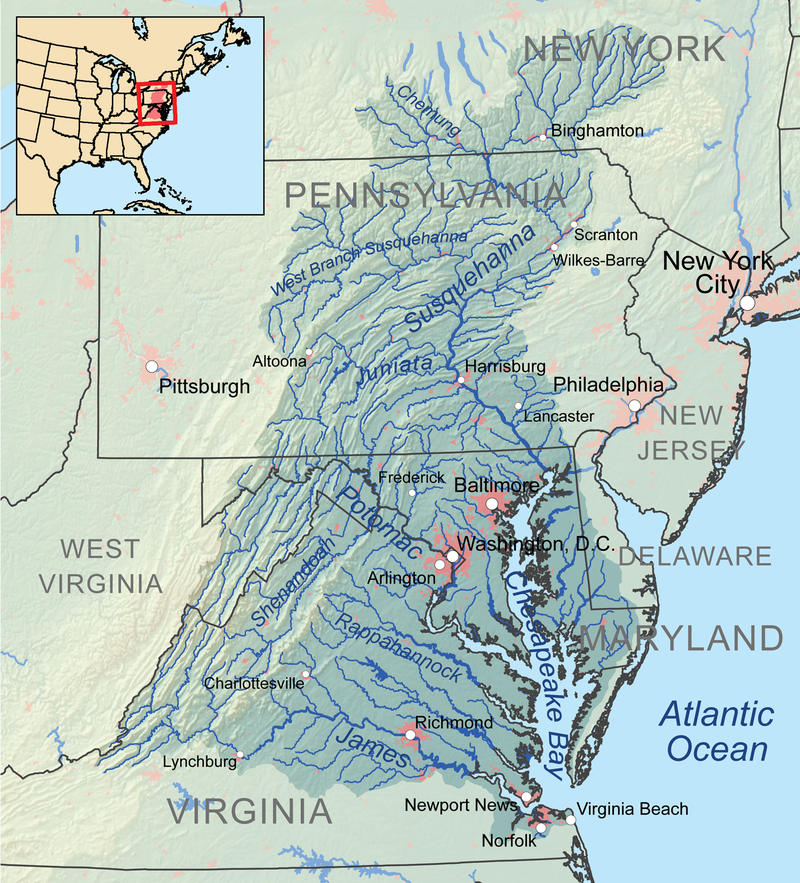

Bodies of Water
Aquatic biomes are the largest part of the biosphere in terms of area. It can contain fresh or salt water. Oceans cover about 75 percent of the Earth’s surface. Oceans have a large impact on the biosphere. Lotic or running water habitats include streams and rivers. They have more oxygenic. Lentic or standing water habitats include lakes or ponds. They have less oxygen. Oligotrophic lakes have nutrient poor and oxygen rich areas. Eutrophic lakes are nutrient rich and sometimes oxygen poor. Streams and rivers have a current. Animals living in vegetation or debris of the bottom are called benthic. These animals are snails, mussels, crustaceans, and insects. Animals up in the water column are called pelagic. Swimming animals are called nekton. Floating or weak swimmers are called plankton. Wetlands include areas that are able to support aquatic plants. They may be freshwater or marine. Estuaries are transition areas between river and sea. Salinity varies from nearly fresh to the salinity of seawater. Many aquatic biomes are stratified into zones or layers defined by light penetration, temperature, and depth. The photic zone is the most productive. The ocean is divided into the following from the least distance to the greatest distance from the surface: Intertidal, Epipelagic, Mesopelagic, Bathypelagic, and other parts. The rocky intertidal zone is submerged and exposed by the tides. Upper zones are exposed to air longer. Physical stress (like dessciation, waves, temperature, and salinity), predation, and competition produce distinct bands. Rocky subtidal zone have kelp forests dominated by brown seaweeds.
They occupy shallow subtidal waters. Grazing urchins and mollusks are common, and predators in this region are sea stars, fishes, and otters. There are coral reefs are limited to the photic zone in tropical marine environments with high water clarity. It is very diverse. Intertidal and subtidal environments with soft sediments include beaches, mudflats, salt marshes, sea-grass beds, and mangrove communities. Salt marsh habitat includes grasses, mussels, crabs, shrimp, and polychaetes. There are burrowing organisms, deposit or filter feeders, small fishes, and birds that feed on them are common. At nearshore soft sediments, calm, tropical, coastal areas support mangrove communities (mangrove trees grow submerged in soft sediments). There is a rich community of detritus feeders like oysters, crabs, and shrimp. Many fishes were often used as nursery ground. The deep sea includes the continental slope, the continental rise, and the abyssal plain. Sand where there are currents, fine mud where currents are weak. Suspension feeding invertebrates are common in that area. Deposit feeders are found in muddy areas. Hydrothermal vents occur in the abyssal plain in areas of submarine volcanic activity. Arachaebacteria that derive energy by oxidizing sulfides form the basis of the food chain. This area has crabs, limpets, and bivalves. Other organisms like tube worms, have symbiotic archaebacteria.
The pelagic realm includes the open ocean area. It has high oxygen, low nutrient levels. Areas of upwelling bring nutrients up from the sea floor. Surface waters are called Epipelagic. Twilight zone that supports a varied community of animals is called Mesopelagic. Deep sea forms depend on a rain of organic debris from above.


Landscapes
Physical and ecological processes shape the Earth’s surface by many factors. Humans can influence the environment and are influenced by it. Many of the physical and ecological processes are earthquakes, floods, volcanic eruptions, erosion, and deposition. The human impact on the environment does deal with water diversion of management. This is found in Aral Sea, the Colorado River, the Aswan High Dam, canals, reservoirs, and irrigation. Landscape changes include agricultural terracing (in China and Southeast Asia), polders (in the Netherlands), deforestation (as found in Nepal, Brazil, and Malaysia), and desertification (as found in Africa and Asia). Environmental changes can occur by acid rain and pollution. There is no question that technology has expanded human ability to modify or adapt to the physical environment. We know about agriculture using fertilizers and mechanization to develop crops. Energy usage from fossil fuels, nuclear, and clean energy resources do impact the world. Transportation from roads, railways, etc. can expanded human population growth. Automobiles and airplanes have grown communication, trade, and travel. The types of housing, farming techniques, recreation actions, and transportation patterns all relate to geography. In life, you have subatomic particles, atoms, molecules, cells, tissues, organs, the organ system, organisms, populations, communities, ecosystems, biomes, and the biosphere.
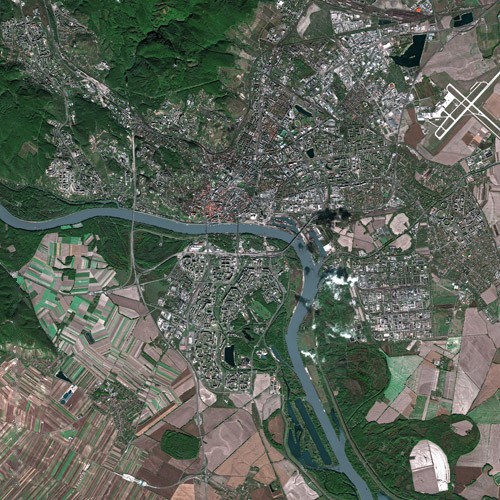
Conclusion
The journey of wisdom is beautiful. We can learn something new every day. The more that we comprehend the value of geography, the more we appreciate our values as human beings. Geography is more than about studying hills, rivers, trees, and rocks. It is the sacrosanct, pristine subject matter that opens our minds to the complex functions of weather, environmental changes, worldwide cultures, and the diversity of vegetation. Scholars and other scientists have fully developed project that document the serious issues of climate change. Numerous human beings have also been involved in programs that try to solve environmental issues (and find ways to improve the relationships among human beings worldwide). True geography is about love. You have to love people and the environment in order for you to have the true essence of geography research. You have to love research, animal life, plant life, and geology in order for you to be an excellent scholar of geography. The watersheds, the oceans, and the climate regions al have a role in the scientific makeup of planet Earth. Therefore, geography manifests itself in a myriad of ways, and we have the same goal to use action in making sure that the Earth develops in magnificent ways.
By Timothy
No comments:
Post a Comment